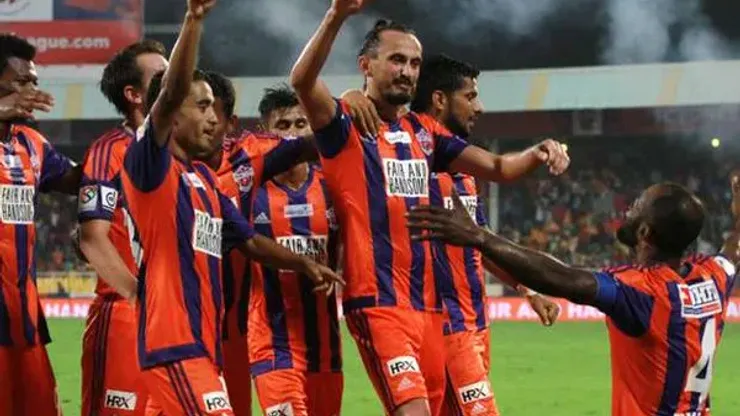The first two seasons of the Hero Indian Super League (ISL) championship has been a smashing success. The well-promoted league is essentially a 60-day mini-tournament that is meant to keep the attention of those in a nation not accustomed to following high-level club soccer on the local level.
Both the Indian Premier League (IPL) competition in 20/20 cricket and Major League Soccer (MLS) in the United States are instructive models to understand how the ISL has been successful. Incorporating the best of other leagues that have been popular in India and in similar developing soccer nations has made the ISL very successful. The league shares Division 1 status with the older and more established I-League but has far greater domestic and international visibility than the other top division in India.
Plus for soccer fans in the United States, games from the Indian Super League are now available via live and on-demand viewing on NGSN.
The IPL demonstrated beginning in 2008 that the Indian public in the nation’s largest cities could be held captive by a club competition that focused on localized franchises over a short 60-day window. For a nation that never had a well-promoted sports league based around the concept of local clubs and regional pride, it was a major breakthrough.
SEE MORE: Indian Super League soccer games now available legally in USA via NGSN.
Major League Soccer in the United States and to a lesser extent the A-League in Australia demonstrated that if you sign players however well-known that have featured for major clubs in European leagues, it buys you credibility with those fans that are new to the game. While many would point out that the United States had a relatively successful national team before MLS kicked off, unlike India who has one of the worst national teams on the planet per the FIFA rankings, the club game in the US was non-existent in a truly well-promoted and professional manner from the early 1980’s until MLS began play in 1996.
The likes of Elano, Alessandro Del Piero, Robert Pirès, David James and Freddie Ljungberg, among others have called the ISL home in its first two seasons. The attraction of these players is the club resumés they provide, as was the case with the likes of Andres Limpar, John Spencer, Roberto Donadoni and others in the early days of MLS. As Americans were educated about the club game, the scope and stature of the types of players the league attracted grew.
High-profile ownership, including some Bollywood and cricket celebrities, have contributed to promotion and popularity of the league. With an emerging middle class that is more westernized and connected with the outside world than previous generations of Indians who were largely insular-minded and xenophobic to an extent, the growth opportunities in India seem unlimited.
The format of the tournament, 60 consecutive days of play with national television audiences for every match, has captivated the imagination of a nation. Since very few matches run concurrently, fans who support their local club have been able to follow other sides easily and that has enhanced the branding and interest in the league nationwide. Smart promotions on city streets and public transit have emphasized the connection to the global game and the big league feel of the ISL.
Crowds for the ISL have been impressive. A year ago, I attended a match in Chennai where the crowd was not only larger than I anticipated but the knowledge of soccer was quite high. Unlike the early days of MLS where many in the crowd used American sports cheers, the ISL match featured genuine chants you might have heard on the terraces in England back in the day, without the foul language that characterized some of that era in the British Isles.
The first two seasons of the ISL have without question improved the footprint for soccer in the world’s second most populated nation. As one of the few countries that had never truly embraced the global game, the league despite its quirky format and franchise-like structure has been a net positive for the concept of growing the sport. The continued popularity of the league in season two, which is now ongoing, shows that the sport at a high level has staying power in a nation that had never truly embraced it.
For that, everyone in global soccer community is a winner.
200+ Channels With Sports & News
- Starting price: $33/mo. for fubo Latino Package
- Watch Premier League, Women’s World Cup, Euro 2024 & Gold Cup
The New Home of MLS
- Price: $14.99/mo. for MLS Season Pass
- Watch every MLS game including playoffs & Leagues Cup
Many Sports & ESPN Originals
- Price: $10.99/mo. (or get ESPN+, Hulu & Disney+ for $14.99/mo.)
- Features Bundesliga, LaLiga, Championship, & FA Cup
2,000+ soccer games per year
- Price: $5.99/mo
- Features Champions League, Serie A, Europa League & Brasileirāo
175 Premier League Games & PL TV
- Starting price: $5.99/mo. for Peacock Premium
- Watch 175 exclusive EPL games per season






